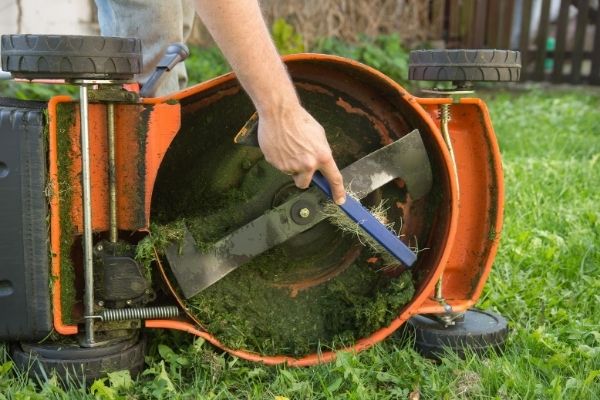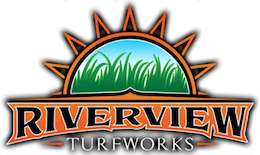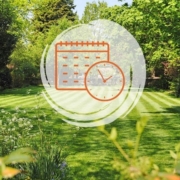Lawn Maintenance Checklist: Learn What You Need to Do Each Season
Have you ever looked at your neighbor’s lawn and wondered how they manage to keep it so green? If the grass is greener on the other side, it is because a homeowner knows the right things to do to their lawn for every season of the year.
Lawn grass is subject to the same things that affect plants in their natural environment. Just as wild plants alter their appearance and behavior throughout the year to match the conditions in their environment, the grass in your lawn does the exact same thing, says Keyrenter Arkansas Team.
To get the most out of the time, money, and effort, you invest in lawn maintenance; you must understand what the grass needs in each season of the year. By working with the natural growth cycles of the grass, you will get a lawn that is even lusher than your neighbors’.
If you’d like a quote for us to handle your lawn and landscape maintenance, contact us by calling us today at (479) 235-1390 or filling out a quote request form online right now.
Below is a checklist of what you should do to your lawn in spring, summer, fall, and winter.

Spring lawn care
What should you do in spring when the snow starts melting or after it is completely gone?
- Take the time to walk around your yard and assess the lawn. Look for dead spots, animal damage, disease, and fungal growth.
- Check soil temperature to know when you can expect to see growth and when to apply pre-emergent to the soil.
- If you have had problems with crabgrass or other kinds of weed, you need to put down some pre-emergent before soil temperatures get up to 55°F.
- Get a soil test before you put fertilizer into the soil. This will give you a snapshot of what is happening inside the soil and what nutrients you need to add.
- A soil test also tells you the soil pH, so you can be sure you have the optimal pH for turf grass.
- Check those areas with the heaviest snow to see if the grass is matted. Fluff up the grass with a rake or leaf blower.
- Only mow or add fertilizer once the forecast shows no risk of hard freezes.
- Before adding fertilizer, remember that your grass needs to wake itself up. Adding nitrogen fertilizer to the soil is only sometimes helpful if you want resilient grass.

Summer lawn care
Keeping the lawn green without letting it grow too long; that’s a problem many homeowners struggle with. How do you solve this issue?
- Your lawn needs a water source during summer (rain or irrigation). How much watering you do depends on your area’s temperature and humidity levels.
- Generally, you want to water the lawn 1-3 times a week with one inch of water each time. To keep the grass healthy, water the lawn only at the first signs of wilting.
- If the mower blades are blunt, you will stress the lawn. Keep the mower blade sharp to get an excellent clean cut. Keep the mower blades high enough to avoid scalping.
- Proper mowing is essential to the health of your lawn. To keep the lawn height at three inches, you should mow it once a week.
- If you prefer to keep the grass very short, you may need to mow it thrice a week.
- Some people like to follow a plan of applying less fertilizer on a more frequent schedule (this could mean fertilizing the lawn in summer). When fertilizing the lawn in summer, add iron and other micronutrients.

Fall lawn care
- If you have cool-season grass on the lawn, you will need to fertilize the lawn. That is because there is usually aggressive root growth during this season.
- Run a de-thatcher over the lawn to remove dead materials and debris on the lawn surface. This step helps to remove dying material from warm-season grass.
- Grub prevention should have kicked off earlier in May, June, and July. If you see signs of grub damage or there is a possibility of grub damage in the fall, apply a grub killer.
- Keep the grass short at the end of fall if you want to see a better performance during spring. When reducing grass height, stair-step the process over weeks of mowing.
- Do not let leaves accumulate on the lawn to the point where they become an issue. If fallen leaves are left on the lawn, you will have more bare spots the following year.
- Keep watering the lawn less often or with as much water as during the warmer months. You don’t want the grass to stay moist because of the lower temperatures.
- If you need grass fast in bare areas, sod is your solution.

Winter lawn care
- Aerate the lawn just before the first frost date; this helps your grass to go dormant.
- Fertilize with essential nutrients in preparation for spring.
- Do not use de-icing products that contain salt if you want to avoid damage to your lawn.
- Get lawn maintenance equipment ready for next year by cleaning and stowing them away.





Leave a Reply
Want to join the discussion?Feel free to contribute!